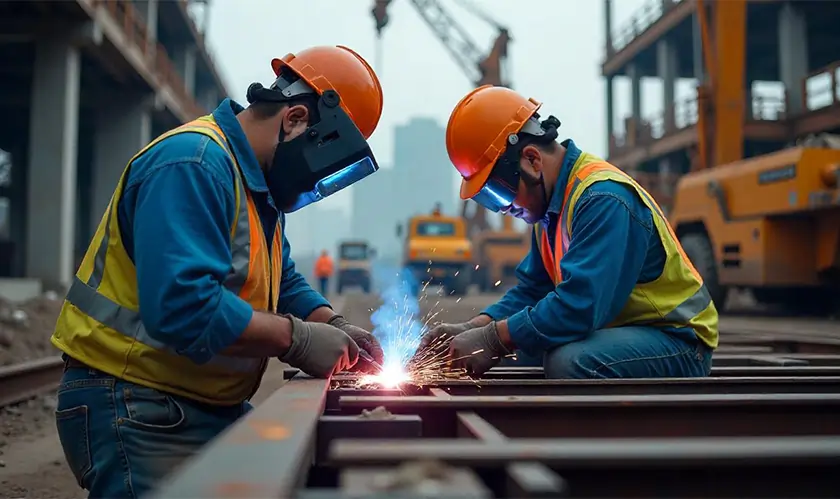Home Industry Architecture and interior design Advancing Infrastructure with ...
Architecture And Interior Design

CIO Bulletin
26 December, 2024
The functioning of our lives heavily depends on infrastructure that supports everything from tall buildings to complex bridges; the core of these constructions is often rooted in skilled welding and fabrication workmanship. Proficiency in these areas does not guarantee the longevity of projects, but it prioritizes their safety and effectiveness. This featured article delves into the significance of welding and fabrication in propelling infrastructure development by showcasing their roles in contemporary construction practices.
Joining materials through welding is a practice where metals are fused together to create a connection between them. A common example is the welding and fabrication steel. Different methods, such as arc welding and gas welding, provide advantages depending on the application requirements. Contrastingly, fabrication focuses on transforming materials into shapes through processes like cutting and bending before assembling them. These techniques are crucial in the realm of construction, as they enable the realization of plans.
Infrastructure projects require a level of accuracy and specialized skills to be successful in their execution. The welding and fabrication processes are key components in this field. For instance, the construction of bridges necessitates the creation of joints that can endure substantial pressure. Likewise, buildings rely on these techniques to establish frameworks that can effectively support their weight. When carried out with precision and expertise, welding and fabrication improve the durability and reliability of infrastructure over the long term.
In the past, welding has undergone significant changes. One notable development is the use of automation, which has introduced robots that can handle tasks with precision. This not only accelerates the building process but also reduces mistakes made by humans. Moreover, breakthroughs like friction stir welding and ultrasonic methods have broadened the horizons, enabling the creation of durable connections. These advancements in technology lay the foundation for structures that can tackle obstacles effectively.
Safety is a priority in the construction industry to ensure the well-being of users of infrastructure. Services like welding and fabrication adhere to strict standards set by trained professionals who undergo extensive training to acquire the required skills and knowledge. Regular checks and inspections are conducted to maintain high safety standards for each weld and fabricated component. This dedication to excellence not only protects the public but also prolongs the lifespan of structures.
Given the increasing awareness of environmental issues in society today, the growing emphasis on sustainability in the fields of welding and fabrication is becoming more significant than ever before. By utilizing eco-friendly materials and adopting methods that minimize waste production and incorporate energy-efficient techniques, the industry is taking essential steps towards a more environmentally conscious approach.
In infrastructure projects, such as buildings or bridges, collaboration between various experts is crucial. Teamwork between skilled welders and fabricators, along with engineers, architects, and project managers, ensures everything runs smoothly from start to finish. This collaboration leads to new, creative solutions that can solve problems quickly and effectively. When different skills come together, infrastructure projects become more innovative and are completed faster.
Ongoing learning and honed skills are crucial in the fields of welding and fabrication to keep pace with advancing technologies and uphold industry standards. Educational courses and official certifications equip individuals with the knowledge required to thrive in their positions. By prioritizing education, the sector ensures a workforce capable of tackling future infrastructure needs.
Skilled welding and fabrication services are crucial for driving infrastructure development by incorporating innovation and teamwork while maintaining standards of workmanship in these sectors. As technology advances and environmental sustainability takes center stage, welders and fabricators will undoubtedly play a part in constructing future infrastructure that is not only safe and sturdy but also visually appealing. As we move towards a future where our cities evolve to meet society-changing requirements, these professionals will remain central to shaping our world.







